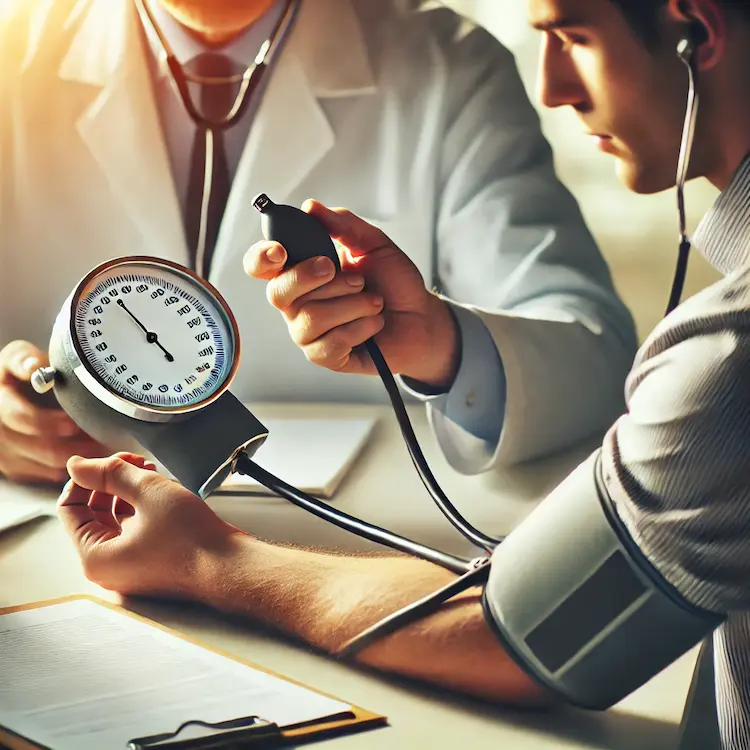Blood pressure measurements are an essential part of health monitoring, especially for those with hypertension or those at risk of cardiovascular diseases. One of the most important aspects of accurate blood pressure readings is knowing the best time of day to use a sphygmomanometer. This article delves into the Best time of day to measure blood pressure for accurate blood pressure readings, exploring the impact of the time of day on these measurements, the physiological factors at play, and the role of consistent monitoring in managing blood pressure effectively.
Why Timing Matters for Accurate Blood Pressure Readings
The time of day can significantly influence blood pressure levels. Blood pressure is not static; it fluctuates throughout the day due to various factors such as activity levels, stress, food intake, and body position. These fluctuations are often referred to as diurnal variation, and understanding how they affect your readings is crucial for accurate assessment and proper diagnosis.
-
Circadian Rhythm and Blood Pressure
- Our bodies follow a natural circadian rhythm, which influences a wide range of physiological processes, including blood pressure. Generally, blood pressure tends to be lower during the night when the body is at rest and higher during the daytime, particularly in the morning after waking up.
- Morning Surge: Studies indicate that blood pressure is usually highest during the morning hours, particularly right after waking. This morning surge is part of the body’s natural preparation for the day ahead. For individuals with hypertension, this surge can be more pronounced, increasing the risk of cardiovascular events such as heart attacks or strokes.
- Afternoon and Evening: As the day progresses, blood pressure generally decreases, reaching its lowest point in the late evening before sleep. However, variations in lifestyle factors such as diet, exercise, and stress levels can alter this pattern.
-
Health Implications of Incorrect Timing Measuring blood pressure at inconsistent times or under inappropriate conditions can lead to inaccurate readings, potentially resulting in misdiagnosis or inappropriate treatment plans. For example:
- Measuring blood pressure immediately after waking, without allowing time for the body to adjust, can lead to inaccurately high readings.
- Similarly, measuring after eating, consuming caffeine, or engaging in stressful activities can cause temporary increases in blood pressure that may not reflect an individual’s typical baseline.

Best Time to Measure Blood Pressure
To obtain the most accurate and consistent results, it is recommended to measure blood pressure at the same time each day under similar conditions. Experts suggest the following optimal times:
-
Morning (Before Breakfast and Medication)
- Why: Blood pressure is typically at its highest during the morning, making this an ideal time to measure, especially for individuals who experience a morning surge. It provides a snapshot of baseline blood pressure before external factors like food or medication affect the readings.
- How: It is best to measure blood pressure immediately after waking up, before eating, drinking, or taking any medications. Ensure you have had a full night’s rest and are seated in a relaxed position.
-
Evening (Before Dinner)
- Why: For those monitoring their blood pressure over time, measuring in the evening, after a day’s activities have settled, can provide insight into how the body has responded to the day’s stressors.
- How: It is important to relax for a few minutes before measuring to avoid elevated readings due to residual stress. Avoid consuming large meals or caffeine right before taking a reading.
Best Practices for Accurate Blood Pressure Measurements
For the most accurate and reliable results, follow these guidelines when measuring blood pressure:
-
Consistency
- Try to measure your blood pressure at the same time each day. This helps eliminate variations that can occur due to differing daily activities.
-
Proper Positioning
- Sit comfortably with your back supported, legs uncrossed, and feet flat on the floor. Rest for at least five minutes before measuring.
- Ensure your arm is supported at heart level, with the cuff placed on the upper arm. This minimizes errors caused by incorrect positioning.
-
Avoid Stimulants
- Avoid caffeine, nicotine, and strenuous exercise for at least 30 minutes before taking a reading. These factors can artificially raise blood pressure.
-
Take Multiple Readings
- For more accurate results, take two or three readings, about one minute apart, and average them. This will help account for natural fluctuations.
-
Use a Reliable Sphygmomanometer
- Ensure that the sphygmomanometer (blood pressure cuff) is calibrated and fits correctly. An ill-fitting cuff can cause inaccurate readings.
Comparison of Different Methods for Measuring Blood Pressure
There are several methods for measuring blood pressure, and each has its own advantages and limitations. Below is a comparison of the most common tools and approaches:
| Method | Description | Pros | Cons |
|---|---|---|---|
| Manual Sphygmomanometer | Uses a cuff and a stethoscope to measure blood pressure manually. | Accurate, widely used by healthcare professionals. | Requires skill and experience to use properly. |
| Automated Digital Cuffs | Use electronic sensors to automatically measure and display blood pressure. | Easy to use, convenient for home use. | May be less accurate than manual readings. |
| Ambulatory Blood Pressure Monitoring (ABPM) | Measures blood pressure at regular intervals over 24 hours. | Provides an accurate picture of daily fluctuations. | Expensive, requires professional setup. |
| Home Blood Pressure Monitors | Personal devices for at-home measurement. | Convenient, allows for regular monitoring. | Accuracy can vary depending on the device and technique. |
Tips for Managing Blood Pressure at Home
-
Monitor Regularly
- Regular monitoring helps track trends and provides valuable information about how lifestyle changes (such as diet or exercise) are affecting your blood pressure.
-
Maintain a Healthy Lifestyle
- Diet, exercise, and stress management are crucial for controlling blood pressure. Reduce sodium intake, maintain a balanced diet, exercise regularly, and practice relaxation techniques.
-
Consult Your Doctor
- While home blood pressure monitoring is a useful tool, always consult your doctor for guidance and interpretation of your results, especially if you notice significant changes or if your readings are consistently high or low.

Conclusion
The time of day you measure your blood pressure can significantly influence the accuracy of the readings. To ensure consistency, it is essential to measure at the same time each day under similar conditions. Morning readings before breakfast or medication and evening readings before dinner tend to provide the most accurate insights into your blood pressure. Following best practices, using the correct equipment, and maintaining a healthy lifestyle are all key factors in managing blood pressure effectively.
Key Takeaways:
- Morning readings before eating or medication are ideal for assessing baseline blood pressure.
- Evening readings provide insight into how daily activities and stress have affected blood pressure.
- Consistency in measurement timing and conditions is key for accurate readings.
- Proper positioning and avoiding stimulants like caffeine and nicotine can improve accuracy.
- Use reliable equipment and follow professional guidelines to ensure the most accurate readings.
Actionable Recommendations:
- Measure blood pressure at the same time each day for consistency.
- Aim for morning measurements before eating or taking medication.
- Avoid caffeine, nicotine, and exercise immediately before measuring.
- Use an accurate, well-fitting sphygmomanometer to minimize errors.
- Consult a healthcare professional regularly for monitoring and guidance.


